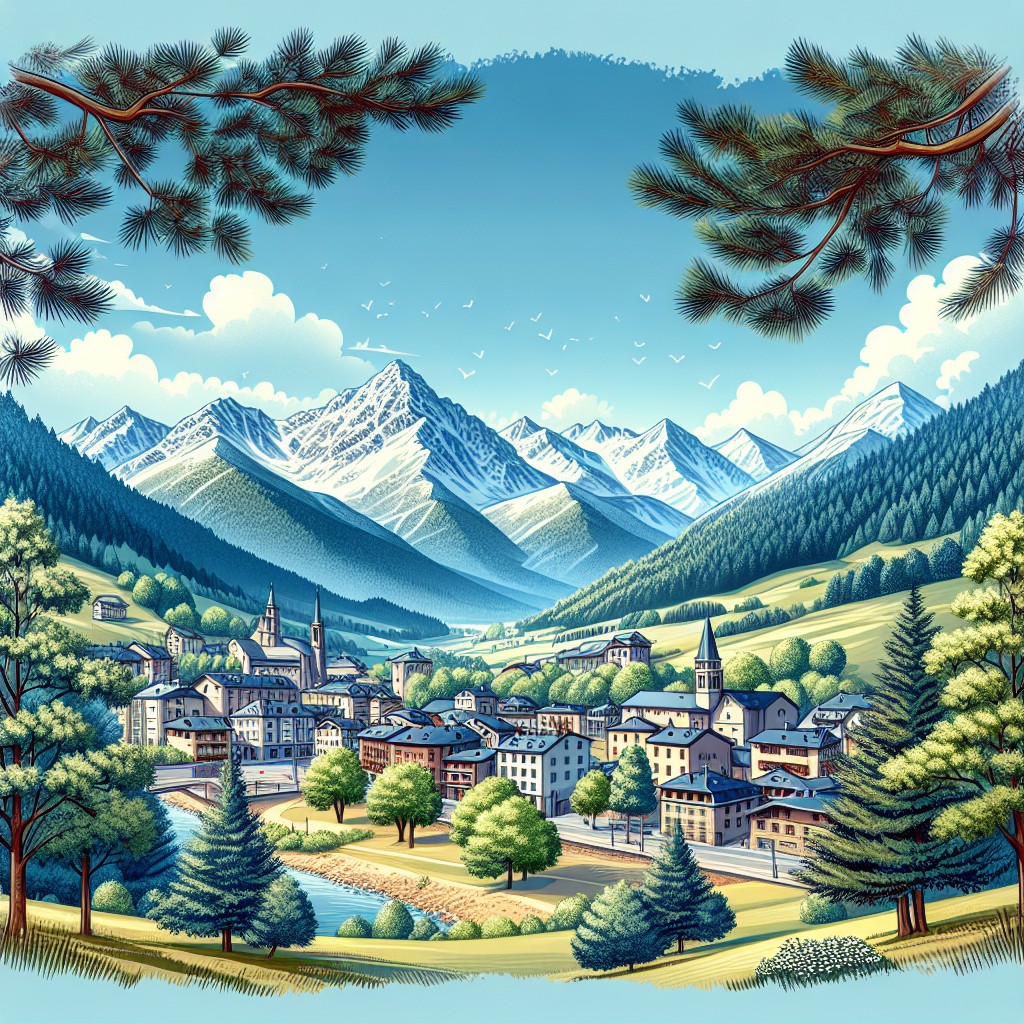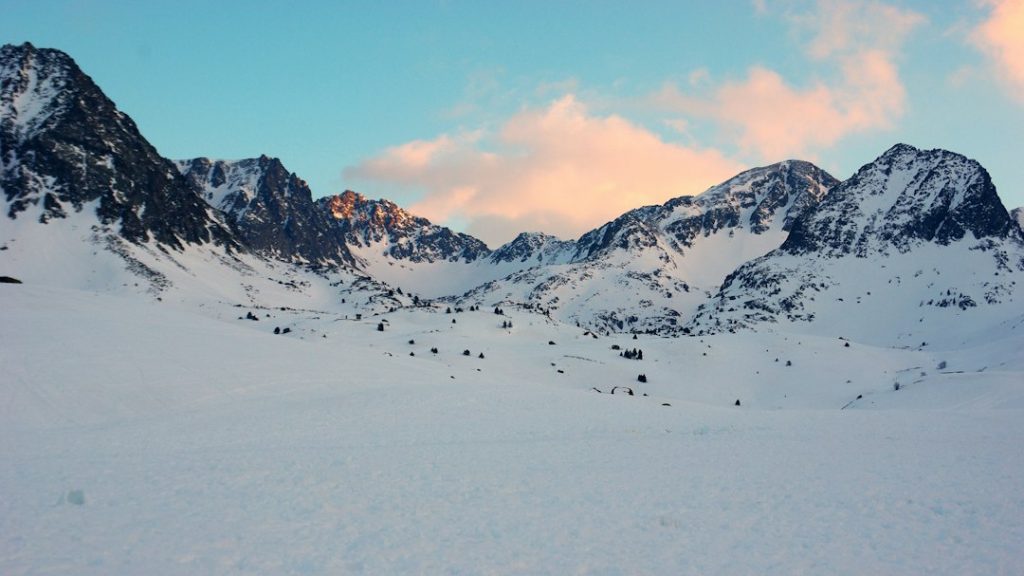Andorra, a small landlocked country in the Pyrenees Mountains between France and Spain, is known for its stunning landscapes and diverse climate zones. Despite its small size, Andorra is home to four distinct climate zones: Alpine, Mediterranean, Continental, and Subarctic. Each zone has its own unique characteristics, flora and fauna, and popular activities for tourists. Understanding these climate zones is important for both tourists and locals alike, as it allows for better planning and appreciation of the country’s natural beauty.
Summary
- Andorra has four distinct climate zones: Alpine, Mediterranean, Continental, and Subarctic.
- The Alpine climate zone is characterized by cold temperatures and heavy snowfall, while the Mediterranean climate zone is warm and dry.
- The Continental climate zone experiences hot summers and cold winters, while the Subarctic climate zone is the coldest and receives the most precipitation.
- Elevation plays a significant role in determining which climate zone a particular area falls into.
- Climate change is having an impact on Andorra’s climate zones, with rising temperatures and changing precipitation patterns.
The Alpine Climate Zone of Andorra
The Alpine climate zone in Andorra is characterized by high altitudes and cold temperatures. This zone is found in the highest parts of the country, including the peaks of the Pyrenees Mountains. The Alpine zone experiences long, snowy winters and short, cool summers. The average annual temperature in this zone is around 5 degrees Celsius.
Flora in the Alpine zone of Andorra includes hardy plants such as alpine flowers, mosses, and lichens. Trees are scarce due to the harsh conditions, but some coniferous trees like spruce and fir can be found at lower elevations. Fauna in this zone includes mountain goats, chamois, marmots, and various bird species.
Popular activities for tourists in the Alpine zone include skiing, snowboarding, mountaineering, and hiking. The region is known for its ski resorts and offers a wide range of slopes for all skill levels. Hiking trails also provide stunning views of the surrounding mountains and valleys.
The Mediterranean Climate Zone of Andorra
The Mediterranean climate zone in Andorra is characterized by mild winters and hot summers. This zone is found at lower elevations in the valleys of Andorra. The average annual temperature in this zone is around 15 degrees Celsius.
Flora in the Mediterranean zone of Andorra includes olive trees, vineyards, and various fruit trees such as cherry, apple, and pear. The region is also known for its wildflowers, including lavender and thyme. Fauna in this zone includes rabbits, foxes, and various bird species.
Popular activities for tourists in the Mediterranean zone include wine tasting, visiting vineyards, and exploring the picturesque villages and towns. The region is also known for its cultural festivals and events, which showcase the local traditions and cuisine.
The Continental Climate Zone of Andorra
The Continental climate zone in Andorra is characterized by cold winters and warm summers. This zone is found in the central parts of the country, away from the high mountains. The average annual temperature in this zone is around 10 degrees Celsius.
Flora in the Continental zone of Andorra includes deciduous trees such as oak, beech, and birch. The region is also known for its meadows and grasslands, which provide grazing areas for livestock. Fauna in this zone includes deer, wild boar, and various bird species.
Popular activities for tourists in the Continental zone include hiking, horseback riding, and exploring the picturesque countryside. The region is known for its scenic beauty and offers numerous trails and paths for outdoor enthusiasts.
The Subarctic Climate Zone of Andorra
The Subarctic climate zone in Andorra is characterized by extremely cold winters and cool summers. This zone is found in the highest parts of the country, similar to the Alpine zone. The average annual temperature in this zone is around 0 degrees Celsius.
Flora in the Subarctic zone of Andorra includes hardy plants such as mosses, lichens, and dwarf shrubs. Trees are scarce due to the harsh conditions, but some coniferous trees like pine can be found at lower elevations. Fauna in this zone includes reindeer, arctic foxes, and various bird species.
Popular activities for tourists in the Subarctic zone include snowshoeing, ice climbing, and wildlife spotting. The region offers a unique opportunity to experience the Arctic-like conditions without having to travel to the polar regions.
The Impact of Elevation on Andorra’s Climate Zones
Elevation plays a significant role in determining the climate zones in Andorra. As elevation increases, temperatures drop and precipitation increases. This is why the Alpine and Subarctic zones are found at higher elevations, while the Mediterranean and Continental zones are found at lower elevations.
The impact of elevation on flora and fauna is also significant. Higher elevations in the Alpine and Subarctic zones have harsher conditions, which limit the types of plants and animals that can survive. Hardy plants and animals that are adapted to cold temperatures and low oxygen levels thrive in these zones.
Lower elevations in the Mediterranean and Continental zones have milder conditions, allowing for a greater diversity of flora and fauna. These zones support a wide range of plant species, including trees, shrubs, and wildflowers. Animals in these zones include mammals, birds, and insects.
The Effects of Climate Change on Andorra’s Climate Zones
Climate change is already having an impact on Andorra’s climate zones. Rising temperatures are causing the snow line to retreat higher up the mountains, shrinking the Alpine and Subarctic zones. This has implications for the flora and fauna that rely on these zones for survival.
In the Mediterranean zone, warmer temperatures are leading to longer and more intense heatwaves. This can have negative effects on agriculture and increase the risk of wildfires. Changes in precipitation patterns can also impact water availability, which is crucial for agriculture and tourism.
In the Continental zone, climate change can lead to more extreme weather events such as heavy rainfall and droughts. This can affect crop yields and increase the risk of flooding. Changes in temperature and precipitation can also impact the timing of plant growth and animal migration.
The Importance of Andorra’s Climate Zones for Tourism
Andorra’s diverse climate zones are a major draw for tourists. The country offers a wide range of activities and experiences throughout the year, thanks to its different climate zones. Tourists can enjoy skiing and snowboarding in the Alpine zone during the winter, and hiking and exploring in the Mediterranean and Continental zones during the summer.
The variety of flora and fauna in Andorra’s climate zones also adds to the appeal for tourists. Nature lovers can explore the different ecosystems and observe unique plant and animal species. The country’s natural beauty and biodiversity make it a popular destination for eco-tourism.
The Agricultural Implications of Andorra’s Climate Zones
Andorra’s climate zones have implications for agriculture in the country. The Mediterranean zone is ideal for growing crops such as olives, grapes, and fruits. The region’s mild winters and hot summers provide optimal conditions for these crops to thrive.
In the Continental zone, farmers can grow a wider range of crops due to the milder conditions compared to the Alpine and Subarctic zones. This zone is suitable for growing grains, vegetables, and raising livestock.
The Alpine and Subarctic zones have limited agricultural potential due to their harsh conditions. However, some farmers in these zones practice high-altitude agriculture, growing crops such as potatoes, barley, and hardy vegetables.
Appreciating the Diversity of Andorra’s Climate Zones
Andorra’s diverse climate zones offer a unique opportunity to experience different landscapes, climates, and ecosystems within a small area. From the snow-capped peaks of the Alpine zone to the vineyards of the Mediterranean zone, each climate zone has its own beauty and attractions.
Understanding Andorra’s climate zones is important for both tourists and locals alike. It allows for better planning and appreciation of the country’s natural beauty. Preserving these diverse climate zones is crucial for future generations to continue enjoying the unique experiences and opportunities they offer. By taking steps to mitigate climate change and protect the environment, we can ensure that Andorra’s climate zones remain intact for years to come.
FAQs
What are the different climate zones of Andorra?
Andorra has three different climate zones: Alpine, Mediterranean, and Continental.
What is the Alpine climate zone?
The Alpine climate zone is characterized by cold temperatures and heavy snowfall in the winter, and mild temperatures in the summer. This climate zone is found in the higher elevations of Andorra, above 2,000 meters.
What is the Mediterranean climate zone?
The Mediterranean climate zone is characterized by mild temperatures and dry summers, with most of the rainfall occurring in the winter. This climate zone is found in the lower elevations of Andorra, below 1,200 meters.
What is the Continental climate zone?
The Continental climate zone is characterized by cold temperatures in the winter and warm temperatures in the summer, with moderate rainfall throughout the year. This climate zone is found in the middle elevations of Andorra, between 1,200 and 2,000 meters.
How do the climate zones of Andorra affect tourism?
The different climate zones of Andorra offer a variety of outdoor activities for tourists, such as skiing in the Alpine climate zone, hiking in the Continental climate zone, and enjoying the beaches and water sports in the Mediterranean climate zone.


